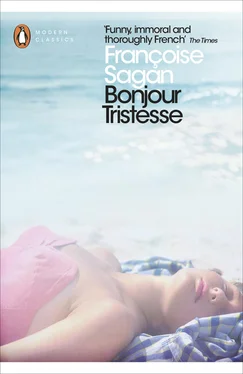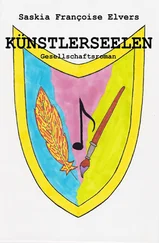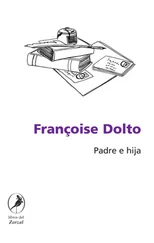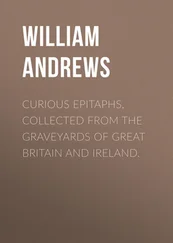I wish to thank Mrs Virginia Murray, archivist at John Murray, Albemarle Street, London, for having generously put at my disposal documentation relating to the English editions of Bonjour tristesse and Un certain sourire .
Heather Lloyd
Glasgow, 2013
Notes
BONJOUR TRISTESSE
1. Paul Éluard, La Vie immédiate : Françoise Sagan found the title for her novel in the second line of the poem she quotes here (‘À peine défigurée’), from the collection La Vie immédiate (1932) by the surrealist poet Paul Éluard (1895–1952). (This is my translation.)
2. Fréjus : A town on the French Riviera to the west of Cannes and close to Saint-Raphaël.
3. Oscar Wilde’s: ‘Sin … life’ : Oscar Wilde (1854–1900), an Anglo-Irish writer, wit, aesthete and Francophile who courted scandal with his writings and lifestyle. Cécile quotes here (in French) from Chapter Two of his novel The Picture of Dorian Gray (1891).
4. Bergson : Henri Bergson (1859–1941), a leading French philosopher of the earlier part of the twentieth century. His wide-ranging work addresses issues relating to consciousness, free-will, intellect, instinct and what he saw as the intuitive, creative impulse within humans. Philosophy has long been part of the school syllabus in France, and Bergson’s thought has traditionally featured in it.
5. Your ideas may be fashionable : The ‘fashionable’ ideas for which Anne castigates Cécile are not hard to identify. The existentialism of Jean-Paul Sartre (1905–80) had been set out in his philosophical works of the 1940s and by the 1950s was widely known of and influential in France, having found expression also in his novels, plays and other writings. According to Sartre, human beings are free to create their own destiny and should shoulder the heavy responsibility for doing so, rather than take refuge in some pattern of existence supposedly preordained for them. In 1949 a close associate of Sartre’s, Simone de Beauvoir (1908–86), published Le Deuxième Sexe ( The Second Sex ). This work, of pioneering importance for modern feminism, highlighted the conventions hampering the liberty of women to flourish as autonomous individuals.
6. bebop : A style of jazz popularized in the New York of the 1940s, more musically developed than swing jazz.
7. the islands : Off the coast to the west of Saint-Raphaël and Saint-Tropez lie the Îles d’Hyères. To the east, facing Cannes and closer in, lie the two smaller Îles de Lérins. Either group of islands could provide an attractive, secluded destination for anyone staying on the Côte d’Azur who had a small boat.
8. However disparate … humanity : Cécile is reading the second chapter of Bergson’s treatise Les Deux Sources de la morale et de la religion (1932). He argues that a distinguishing mark of our humanity is our potential ability (referred to here as ‘the creative principle in the human species’) to transcend conventional loyalties dictated by tribe and clan and to reach out to those who are not like us. While the quotation conveys the dryness of the revision that Cécile is having to buckle down to on holiday, its substance may appear relevant to the situation in which she and Anne find themselves with regard to each other.
9. The baccalaureate was bound … useful : Passing the baccalauréat , an examination taken as the culmination to secondary level studies, would have secured for Cécile a university place.
10. Kant : Immanuel Kant (1724–1804), a German philosopher whose writing greatly influenced the development of European thought. In his best-known work, Critique of Pure Reason (1781), Kant analyses the competing claims of reason and perception, a topic which Cécile, in her divided state of mind, may consider to be of particular relevance to herself. To the hedonist Raymond, on the other hand, his daughter’s interest in Kantian thought could be a worrying sign that she risks turning into a blue-stocking.
11. Pascal : Blaise Pascal (1623–62), a French writer, thinker and mathematician. The work for which he is most remembered, the Pensées , published after his death, is a series of reflections in which he seeks to reconcile reason and Christian mysticism. Biographers of Sagan record that she wrote a composition on Pascal for her baccalauréat .
12. You’re not Snow White : In the well-known folk tale to which Raymond alludes, Snow White has a wicked stepmother who tries to get rid of her.
13. Route de l’Esterel : This is not the coast road (la corniche) but what in the 1950s was a narrow, winding road going north from Fréjus through deserted, hilly country.
A CERTAIN SMILE
1. Florence Malraux : Florence Malraux (b. 1933) was a close, lifelong friend of Françoise Sagan (1935–2004) whom she met at school when she was sixteen. She was the daughter of André Malraux (1901–76), an eminent writer who, in 1959, was appointed as Minister of Culture by Charles de Gaulle, shortly after the latter became President of the newly instituted French Fifth Republic. Florence, a keen supporter of Sagan in her early development as a novelist, went on to work in cinema.
2. Roger Vailland : Vailland (1907–65) was a novelist and, for a period, a member of the French Communist Party. He also worked in journalism and the cinema. Although not altering their meaning, Sagan slightly misquotes Vailland’s original words (‘L’amour est ce qui se passe entre deux êtres qui s’aiment’) as they appear in Drôle de jeu , his first novel (Deuxième Journée, V). Published in 1945, it was one of the earliest novels set in a French Resistance milieu to appear at the end of the Second World War. Although the action of Drôle de jeu is very different to that of A Certain Smile , in each work a dispassionate gaze is turned on the theme of love, and Paris with its well-known streets and districts provides a backdrop in both.
3. Rue Saint - Jacques : The reference to Rue Saint-Jacques, an important thoroughfare in the Quartier Latin, in the vicinity of the ancient University of Paris (la Sorbonne), situates the opening of the story firmly in the student quarter of the city on the left bank of the River Seine.
4. the River Yonne : The river gives its name to the French département of Yonne, an area in Burgundy about an hour south-east of Paris.
5. the Gare de Lyon : One of the main railway stations in Paris, a departure point for southbound trains.
6. Epicurus : A Greek philosopher (340–270 BCE) who taught the importance of the pursuit of pleasure.
7. the Quai de Bercy : One of an important series of embankments along the River Seine, this one is on the right (i.e. northern) bank and to the east of the city. The French singer Maurice Chevalier (1888–1972) recorded a sentimental song of the same name in 1947, celebrating its fame as a centre of the French wine trade; a whodunit film entitled Minuit quai de Bercy appeared in 1953.
8. a Princesse de Clèves : La Princesse de Clèves , one of the earliest French novels, as the genre has come to be understood, written by Madame de Lafayette (1634–93), analyses the passionate longing experienced by the eponymous heroine for the worldly duc de Nemours, for whom she does not however abandon her sense of duty towards her worthy husband.
Читать дальше












